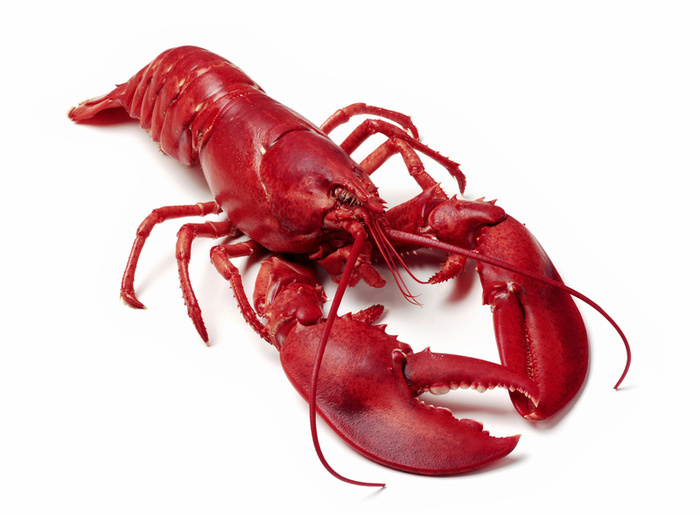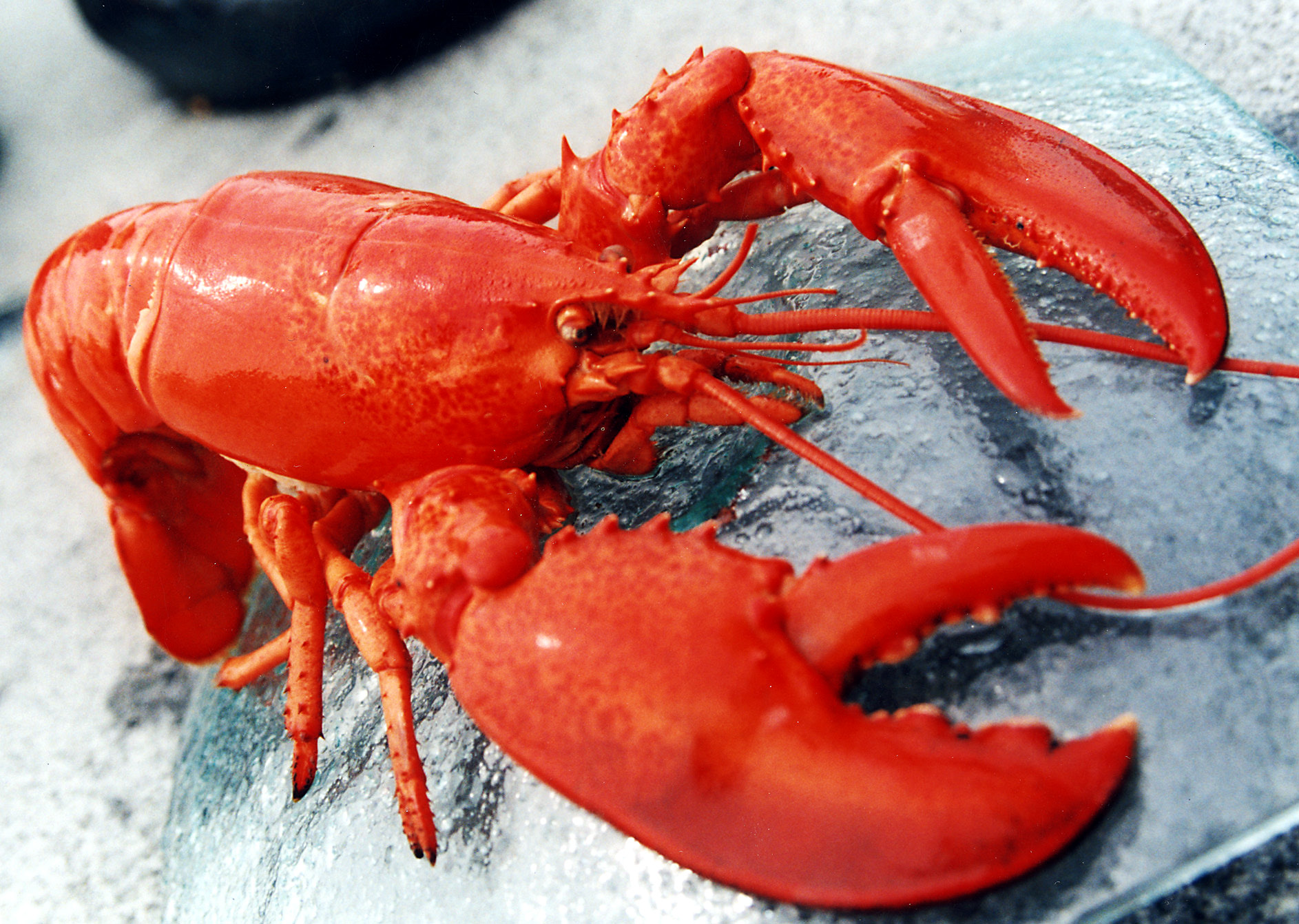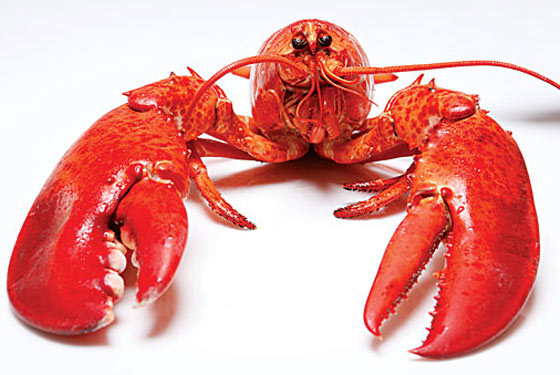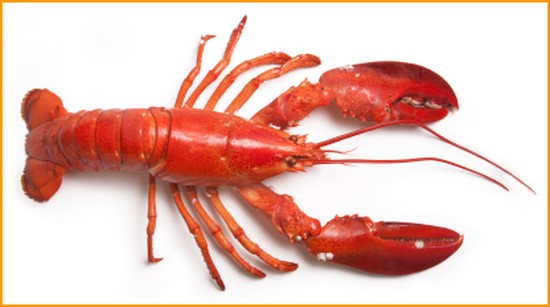
Lobsters are joint-legged animals
that belong to the phylum Arthropoda. This
diverse phylum of animals also includes the insects,
spiders, ticks, mites, millipedes and centipedes.
Phylum characteristics include a chitinous
exoskeleton, jointed appendages, a ventral nervous
system, and a dorsal brain. Lobsters are crustaceans, which are placed in the
class Malacostraca along with the shrimp. Crabs
differ from lobsters in having a broad upper shell
or carapace and an abdomen that is shorter and either
tapered or tucked forward beneath the carapace.
Because they have five pairs of legs, crabs and
lobsters belong to the order Decapoda. The first
one or two pairs of legs are typically enlarged and
modified as chelicera, which are variously used
for feeding or defense. In some decapods they
may also have a sexual function. The remaining
three or four pairs of legs are used for walking, or,
in some species, swimming or climbing.
Lobsters
Millions of American lobsters (Homarus americanus)
are harvested for food each year, making
them possibly the most commercially important
of all crustaceans. Lobsters differ from crabs in
having an extended thorax. Most are large: up to
sixty centimeters in length and twenty-two kilograms
in weight. The first pair of walking legs
is modified into large claws or chelipeds. The European
lobster (Homarus gammarus) is similar in
shape but somewhat smaller. Lobsters walk forward
using their walking legs, but when threatened
swim rapidly backward using their broad
tail segment or telson.
Ecologically, lobsters are creatures of rocky
subtidal zones that rarely extend activities shoreward.
Eggs are laid in late summer, generally July
and August of every other year, and are glued to
the female's abdominal appendages. They hatch
in about a year and the young remain attached for
some time before drifting free and becoming part
of the plankton.
The spiny and slippery lobsters of the tropics
and pantropics are not closely related to the
American lobster. Some reach the size of American
lobsters, but lack pincers. Spiny lobsters are
noted for their mass migrations during fall, in
which up to fifty individuals march together,
heads-to-tails, in long queues. Females are capable
of producing four million eggs during the
spring reproductive season. The transparent juveniles
attach to jellyfish and undergo a series of
molts for about a year, gradually transforming
into a five-centimeter lobster. Lobsters actively
forage for live prey, including worms, mollusks,
crabs, and small fishes, as well as organic debris.
Lobster Facts
Classification:
Kingdom: Animalia
Phylum: Arthropoda
Subphylum: Crustacea
Class: Malacostraca
Order: Decapoda
Families: Homaridae or Nephropsidae (true lobsters),
Palinuridae (spiny lobsters or sea crayfish),
Scyllaridae (slipper, Spanish, or shovel
lobsters), Polychelidae (deep-sea lobsters);
Brachyryncha (true crabs), Anomura (irregular-
tailed crabs)
Geographical location: All the earth's oceans, except
at the poles
Habitat: Mostly marine, although some crab species
live much of their lives on land near salt
water
Gestational period: Lobsters, eggs hatch in one
year
Life span: Lobsters, up to fifty years
Special anatomy: Segmented exoskeleton; large
claws on front pair of legs (one often larger
than the other); eyes on the ends of stalks
Other popular Animals
Photo Gallery of - Lobster








 Animalia Life
Animalia Life